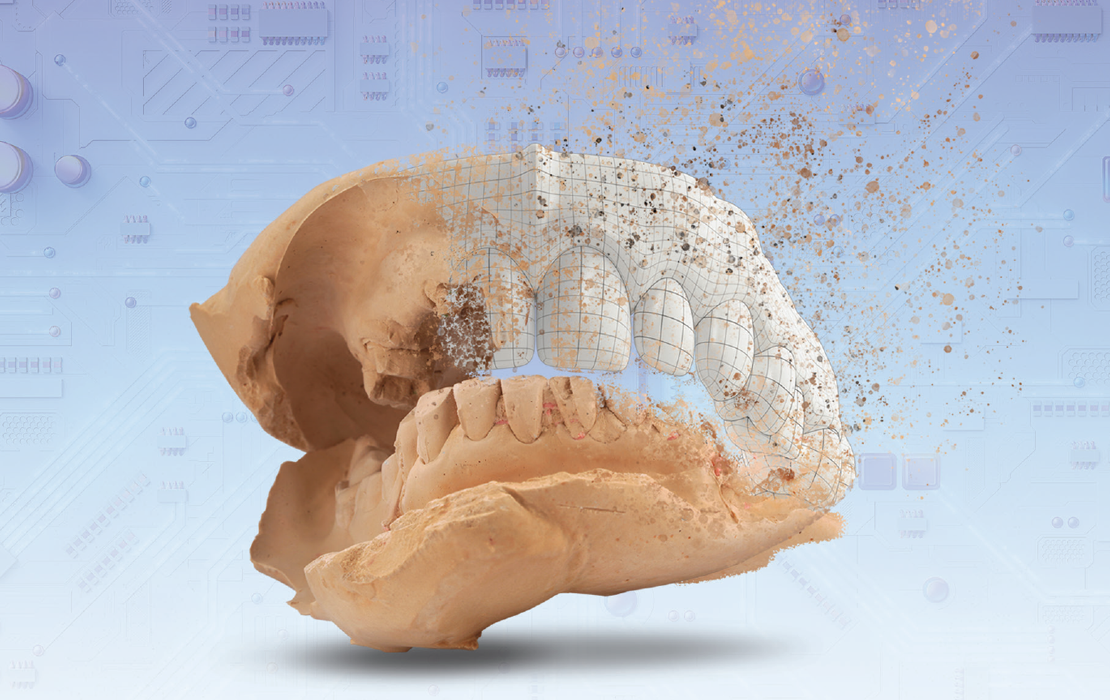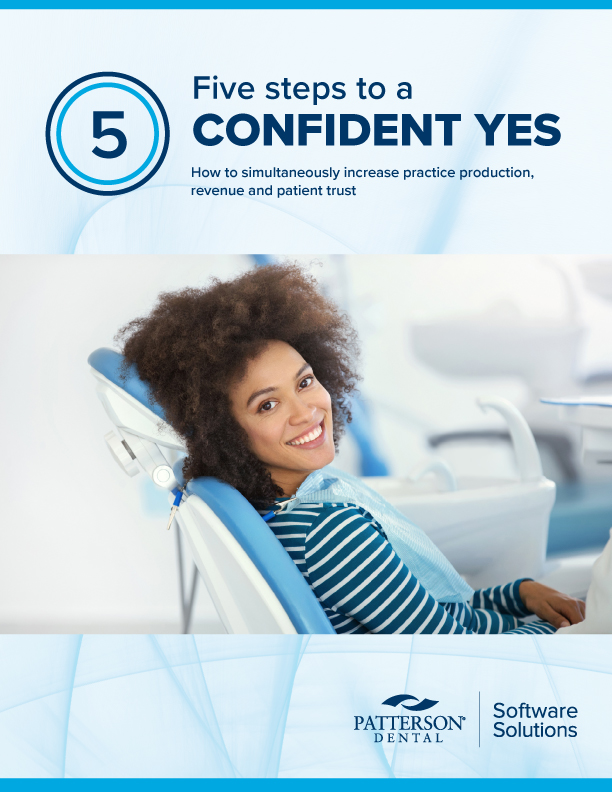ADA treasurer offers deeper dive into finances
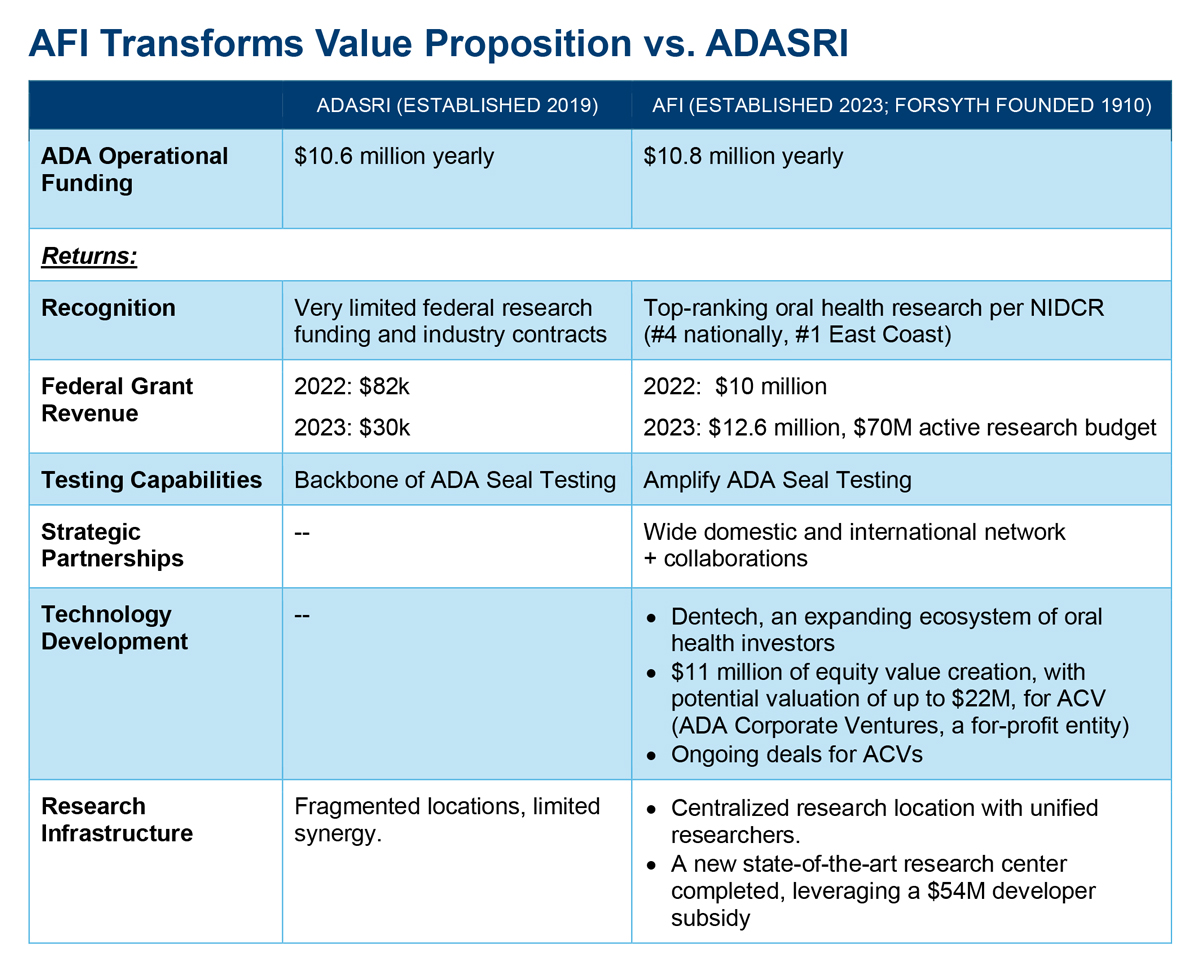
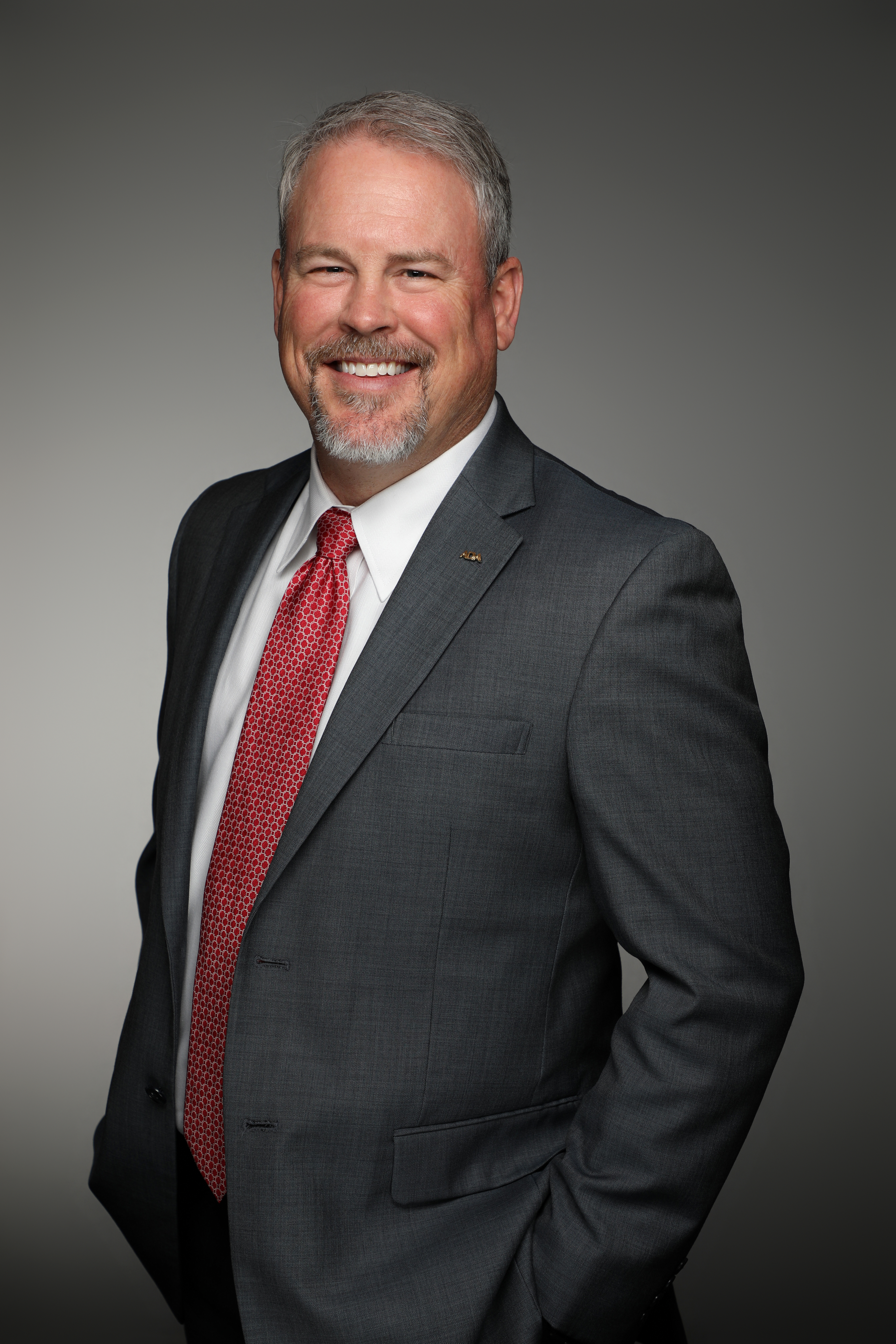
Editor’s note: ADA Treasurer Cody Graves, D.D.S., M.B.A., sends periodic e-newsletters to the House of Delegates. The Aug. 11 newsletter focused on the formation of the ADA Forsyth Institute, why the decision was made and the financial impact. ADA News has repurposed the newsletter below.
As part of ADA leadership’s ongoing commitment to transparency with the membership, this installment of my Treasurer’s Newsletter delves deeper into the financial impacts of major ADA initiatives implemented since 2022. Total spending from reserves to support these initiatives as of March 2025, detailed in the graphic below, comprised the $142 million worth of projects noted in my last newsletter. By systematically reviewing our spending, we aim to account for past and current expenditures, identify opportunities for cost-cutting measures, and inform strategic decisions about future spending and revenue generation.
This report explains the formation of the ADA Forsyth Institute — the “why” behind its creation and how it fits within ADA’s long-term vision. Future newsletters will provide deeper insights into AFI’s performance, cost-saving strategies, potential revenue sources and emerging opportunities.
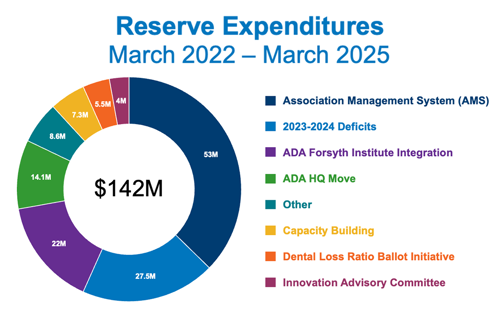
ADA’s legacy of scientific research
Scientific evidence has always been core to our mission. In 2015, we began reorganizing how we conduct and fund dental research by transitioning certain functions from the ADA Foundation, which is a 501(c)(3), to a newly formed entity: the ADA Science and Research Institute, a wholly owned LLC under the ADA’s 501(c)(6).
To comply with IRS guidelines, ADASRI purchased ADAF research assets in 2020 at fair market value, and ADASRI then began operating with its own board and consolidated research functions.
Challenges with the ADASRI structure
By 2022, several barriers emerged:
· ADASRI’s LLC structure under a 501(c)(6) made it more challenging to be awarded certain federal research grants.
- Visa sponsorship for researchers from other countries was limited.
- Staff were ineligible for Public Service Loan Forgiveness.
- Talent recruitment and retention became more difficult.
- ADASRI would be losing physical space due to the need to move out of the National Institute of Science and Technology labs in Gaithersburg, Maryland.
Upon evaluation of these various barriers, it became clear the ADA needed to operate under a 501(c)(3) structure to remain competitive and impactful in the research world.
Strategic opportunity: Forsyth Institute
In early 2023, while seeking a new CEO for ADASRI, the ADA engaged with the Forsyth Institute, one of the world’s largest oral health research centers. Forsyth was considering new opportunities and seeking stability — opening the door to collaboration.
Key synergies included:
- Forsyth had a strong grants pipeline but lacked stable administrative funding.
- ADASRI had funding and equipment but needed better lab space and 501(c)(3) status.
- Forsyth had available lab facilities in Boston, while ADASRI was losing space at NIST.
- Forsyth’s CEO became a natural candidate to lead the new research entity.
- Both ADASRI and Forsyth had a shared vision for growing partnerships and exploring the business potential of oral health research.
In short, transferring ADASRI’s research capabilities and the creation of the ADA Forsyth Institute resulted in opportunity for greater impact without duplicating investments.
Financial picture: Then and now
Prior to the October 2023 formation of AFI, ADASRI required $10.6M annually in operating support from the ADA and the ADA Foundation). In FY2022, ADASRI reflected that support as follows:
- Revenue: $13.7 million total (including $10.3 million ADA service fees).
- Expenses: $11.8 million
- Net gain: $1.9 million.
Forsyth, by contrast, operated with $27.7 million in expenses in FY2023 and had a significant research volume, but still needed $8.5 million in additional support to break even.
For FY2025, ADA’s annual support to AFI remains at $10.8 million, to deliver goals of more and better outcomes through the unified efforts of the ADA Forsyth Institute.
In addition to annual support, the ADA also made one-time reserve investments into AFI for the following:
- Transition costs (some funded by ADASRI reserves) ($7.1 million).
- Severance and shutdown costs ($4 million).
· New lab space buildout ($10.9 million) It should be noted that the $10.9 million funded by the ADA to help cover lab space buildout costs was structured as an intercompany loan instead of a grant to enable the ADA to eventually be repaid this amount from AFI which functions as a 501(c)(3) public charity non-profit organization.
As noted in my first newsletter, the total approved spending for AFI (both from ADA and ADASRI) out of reserves as of March 2025 was $22 million. These were costs the ADA likely would have incurred anyway had we restructured ADASRI independently.
Future financial benefits for the ADA
This combination should generate greater long-term value from the same annual operating budget. Potential financial returns include:
- Reduced annual funding needs as AFI becomes more self-sustaining
- Licensing and royalties from ADA-partnered scientific innovation
- Joint ventures and investments in emerging technology and products
AFI’s structure supports these goals while maintaining ADA’s mission-driven focus on public and professional health.
Next steps and ongoing oversight
The ADA Board of Trustees will continue to monitor AFI’s results and financials, requesting annual grant-style reports to ensure transparency and alignment with original assumptions.
In future newsletters, I’ll share updates on:
- AFI’s research initiatives and financial outlook.
- The sale of the ADA headquarters building.
- Salesforce and association management system transition.
- And more.
In closing
Once again, open communication built on transparency and efficiency is my goal as your ADA Treasurer. As a reminder, this is the first of two reports about AFI. The purpose of this report was to provide a comparison of AFI to ADASRI. Due to timing, the next newsletter will focus on the ADA headquarters building, then the following newsletter will again focus on the long-term potential of AFI’s innovation and relationship with the ADA.
Thanks again for allowing me to serve.


